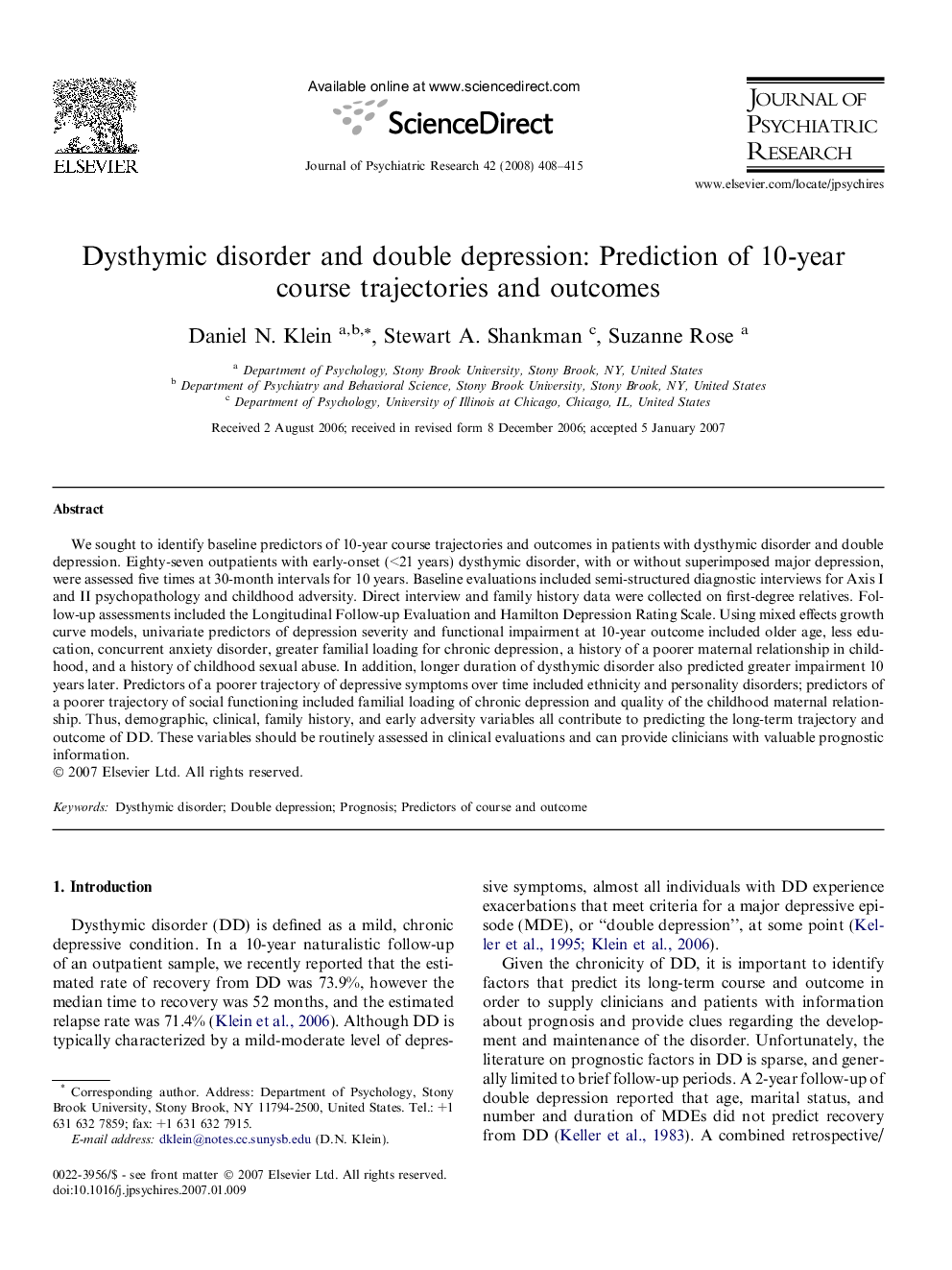| Article ID | Journal | Published Year | Pages | File Type |
|---|---|---|---|---|
| 327207 | Journal of Psychiatric Research | 2008 | 8 Pages |
We sought to identify baseline predictors of 10-year course trajectories and outcomes in patients with dysthymic disorder and double depression. Eighty-seven outpatients with early-onset (<21 years) dysthymic disorder, with or without superimposed major depression, were assessed five times at 30-month intervals for 10 years. Baseline evaluations included semi-structured diagnostic interviews for Axis I and II psychopathology and childhood adversity. Direct interview and family history data were collected on first-degree relatives. Follow-up assessments included the Longitudinal Follow-up Evaluation and Hamilton Depression Rating Scale. Using mixed effects growth curve models, univariate predictors of depression severity and functional impairment at 10-year outcome included older age, less education, concurrent anxiety disorder, greater familial loading for chronic depression, a history of a poorer maternal relationship in childhood, and a history of childhood sexual abuse. In addition, longer duration of dysthymic disorder also predicted greater impairment 10 years later. Predictors of a poorer trajectory of depressive symptoms over time included ethnicity and personality disorders; predictors of a poorer trajectory of social functioning included familial loading of chronic depression and quality of the childhood maternal relationship. Thus, demographic, clinical, family history, and early adversity variables all contribute to predicting the long-term trajectory and outcome of DD. These variables should be routinely assessed in clinical evaluations and can provide clinicians with valuable prognostic information.
